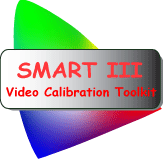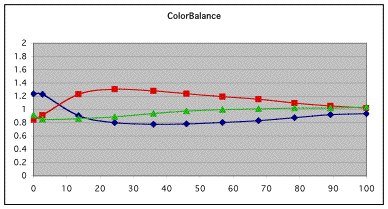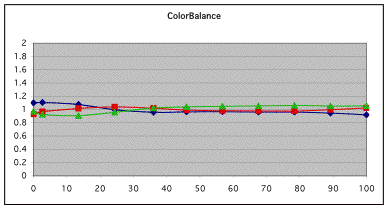SMART III - Video Calibration Toolkit
Steve Smallcombe's SMARTAVTWEAKS site

Introduction to how SMART works
Frequently Asked Questions about SMART
Here is what's new is SMART III version 1.2
The Dummies Guide explains the SMART process in a non-technical way
Buy SMART III at EnhancedHT - your exclusive source for all SMART products
Having trouble? Learn the most common mistakes people make using SMART
Read about using bias lights to improve perceived black levels.
Here are some additional tips for the SONY projectors and solution to common problems.
Over the last few years, I, and many others have found the SMART III is a very useful tool for characterizing and calibrating a wide range of video projectors, including LCD, DLP and LCOS, in terms of grayscale tracking, gamma tracking and the measurement and optimization of contrast ratios. For LCD-based projectors, especially, a key part of this process has been the use of CC filters, a technique I developed for use with my SONY 10HT several years ago.
The use of CC filters, especially with LCD-based projectors can improve contrast ratio, grayscale tracking and color balance at low IRE levels, where LCD-based projectors often have a bit of a blue tint.
Today, CC filters are in widespread usage with many kinds of projectors. SMART can be used to re-establish the color balance in conjunction with the use of a CC filter, thus obtaining significant improvements in contrast ratio and black levels. It is easy to focus on the filter as the tweak, but since the object of this exercise is to NOT correct or change the color balance after the filter is applied, then the measurement and adjustment process that assures this, SMART III, is just as important as the filter. For an introduction to the use of CC filters, click here.
 Sanyo
Z1 before Calibration
Sanyo
Z1 before Calibration
 Sanyo
Z1 after SMART III calibration
Sanyo
Z1 after SMART III calibration
SMART
III version 2.0.
SMART III version 2.0 has several new features associated with the analysis
of gamma tracking. The gamma tracking graphs and calculations have been
improved and have been extended to lower IRE levels.
SMART now can also now be used with sources for IRE windows other than
Avia. The IRE levels on Avia were not at the nominal levels, e.g. IRE
10 was actually approximately IRE 2.7. SMART III has always corrected
its graphs and calculations for the actual IRE level present on the Avia
disk and thus could not be used with IRE window sources that had “nominal”
IRE levels without getting incorrect gamma tracking. Version 2.0 now supports
both sources of IRE windows and a check box can be used to select the
appropriate source. If you are using Avia, keep the box checked, otherwise,
uncheck it.
Several new models are now supported including Panasonic projectors. The
Panasonic version has been recently tested with the 500U and 700U Panasonic
projectors.
With the introduction of SMART III version 2.0, I am placing less emphasis
on projector specific versions, and instead have created a single spreadsheet
that will actually handle all projector types, with the user selecting
a check box in the spreadsheet for the appropriate family of projectors,
e.g. SONY LCD, Sanyo LCD, Panasonic LCD, DLP, etc.
In general the manual has been significantly updated and make consistent with the current spreadsheet and my recent experiences calibrating projectors, e.g. it now includes a section on calibrating projectors that use a dynamic iris. Read more about What's new with version 2.0
Read about SMART for DLP-based projectors.
The
Sanyo Z2 has proven particularly difficult to tweak, but SMART and a CC
filter can help. Tweaking the Sanyo Z2
Reviews using SMART III
I have used SMART III in reviews of the Sanyo PLV-70 , the Epson TW100 , Optoma H55, Sanyo PLV-Z1, PLV-Z2, Optoma H55 and H56, the BenQ8700, SHARP 12000, Hitachi TX100, Infocus 4805 and Panasonic 300U, 500U and 700U projectors
Note added on April 2, 2011: SMART sales were suspended in 2005. I would like to thank all of the many SMART customers for their support and encouragement over the last few years, and Enhanced Home Theater for doing a very professional job of handling the business aspects of SMART.
You can contact me (Steve Smallcombe) via e-mail at steve@smartavtweaks.com
Last update: April 2, 2011: SMART sales suspended.